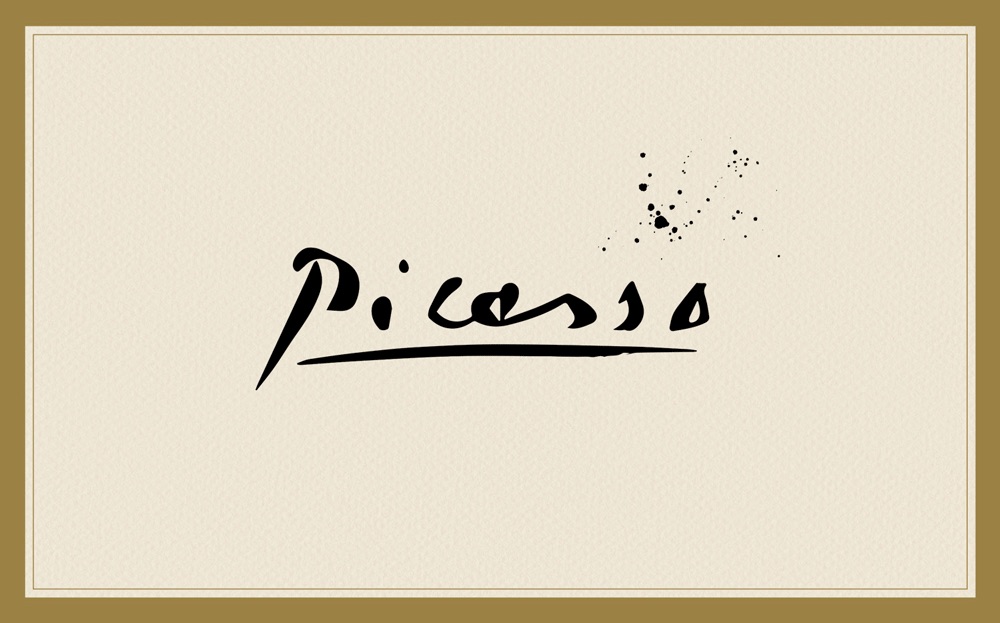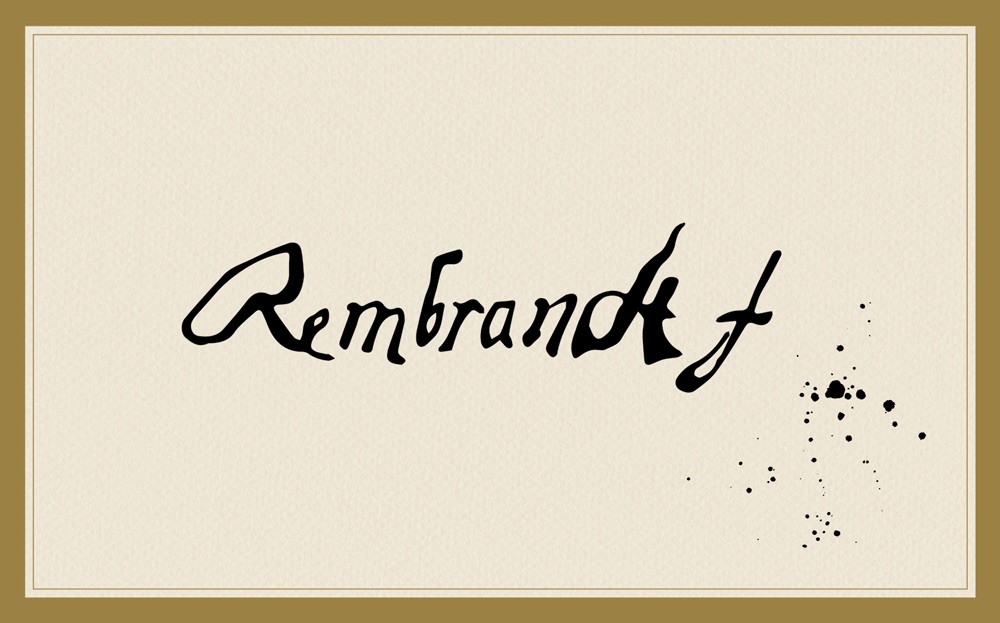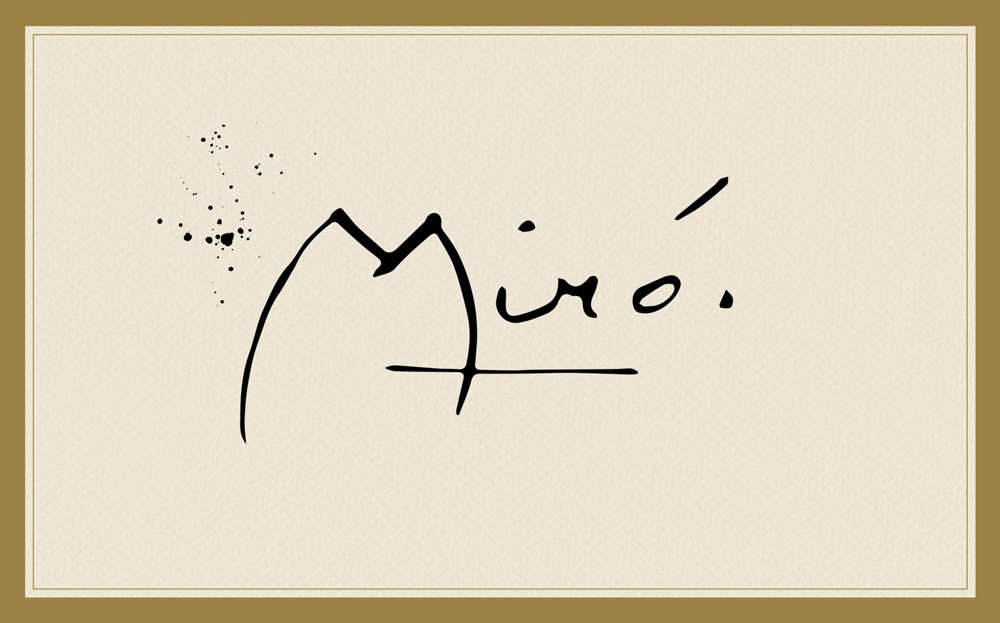12 of the Most Famous Artist Signatures in History
 One of the most unconventional ways that artists can make their work stand out is with a unique signature. Those who study graphology, also known as the analysis of handwriting, believe that a person’s signature can demonstrate recognizable characteristics of their personality and work.
One of the most unconventional ways that artists can make their work stand out is with a unique signature. Those who study graphology, also known as the analysis of handwriting, believe that a person’s signature can demonstrate recognizable characteristics of their personality and work.
Though some heavily debate this method, we can still learn a lot about artists throughout history simply by looking at what’s written at the bottom of their masterpieces. In this post, we’ve compiled a list of 12 renowned artists and analyzed the correlations between the ways they signed their name and the most notable features of their style of art.
Pablo Picasso

As one of the most prominent artists of the 20th century, Pablo Picasso made strides in the art of Cubism and is best known for works like “Girl before a Mirror” (1932) and his many self-portraits. He is now one of the most well-known names in art history, and his dedication to his craft can be traced all the way back to his childhood as a prodigy in Spain. With wide strokes and spacing, Picasso’s signature perfectly emulated his hard work and positive demeanor. Picasso’s is one of the most famous artist signatures of all!
Leonardo da Vinci
The signature belonging to the renowned artist behind the Mona Lisa represented his pride in his work just as visibly as his troubles. The angular style of da Vinci’s signature reflected the groundbreaking contributions of his work to art, science, and more during the Renaissance era.
Albrecht Dürer
This German Renaissance man brought masterpieces like “Feast of the Rosary” (1506) to life throughout the 15th and 16th centuries. Dürer’s simple yet unique monogram exemplified his ambitious nature and his eye for detail and proportions in his artwork. The intense pride he felt in his art shines through the bold lettering in his signature.
Rembrandt

One of the most famous Dutch painters throughout the 17th century was Rembrandt, a major figurehead of the Dutch Golden Age. Rembrandt showed his wisdom and generosity through the wide letter spacing in his signature. However, the crooked and curvy nature of his lettering reveals a desire for consistent reassurance and praise throughout that success.
Michelangelo
As another famous Renaissance artist, Michelangelo’s paintings, poetry, buildings, and sculptures always told a story. His iconic painting on the ceiling of the Vatican’s Sistine Chapel has cemented his status as one of the most prolific artists of all time. Even his signature reflected the nature of his artistry, showing a quiet introspection that mirrored his introverted demeanor. He also signed his name at a rightward slant, which many believe indicated the headstrong attitude he adopted throughout life, especially when it came to his feud with the famous artist, Raphael.
Mary Cassatt
Mary Cassatt was an American trailblazer for women in the arts, as well as the style of Impressionism, throughout the 19th century. Many of Cassatt’s paintings of real people, such as “The Child’s Bath” (1893) and “Children Playing On The Beach” (1884), drew inspiration from her time spent in France. She signed her name boldly with a rightward slant, denoting her diligence, until the end of the signature, where it trails off to reveal a sense of spontaneity.
Joan Miró

This Spanish painter made strides in the Surrealist movement throughout the 20th century, including such peculiar works as “El Sol” (1949) and “The Farm” (1922). Many compared Miró´’s work to the likes of Pablo Picasso, as both broke countless traditional barriers in the world of painting. He signed his name with a massive “M”, reflecting his large, amiable personality, followed by unslanted, bubbly letters that showed a calm pride in his work.
Frida Kahlo
Frida Kahlo was a Mexican painter known best for her masterful self-portraits and her contributions to the Surrealist movement of the 20th century. She took deep pride in her identity as an indigenous woman, and the slanted, spaced-out lettering of her signature clearly reflects this. However, Kahlo lived a very troubled life, and this shone through in the way she signed her name with the changing pressure of
her letters.
Yayoi Kusama
As one of the most accomplished Japanese artists in history, Yayoi Kusama’s sculptures and paintings played a major role in the development of the style of Pop Art throughout the early and mid-20th century. Kusama’s neat, tapered signature demonstrates the artist’s need for order and routine, as well as her solitary and slightly anxious nature.
Salvador Dalí

Salvador Dali, a Spanish painter, was an icon in the realm of Surrealist art. His countless masterpieces, including “The Persistence of Memory” (1931) and “Metamorphosis of Narcissus” (1937), demonstrate a sense of whimsy that is consistent with his signature. The bold, slanted lettering at the beginning matches Dali’s unconventional style, while the straightened appearance by the end of the signature serves as a reminder of his wit and eccentricity.
Banksy
Though this English graffiti artist’s true identity remains unknown, their work has become a legendary contribution to 21st-century contemporary art. Banksy doesn’t have a singular signature, but each time they sign their work, the letters are boldly written with very little space in between. Their implied confidence and intelligence shine through with this style, which perfectly complements their anonymous presence.
Kehinde Wiley
Kehinde Wiley is a contemporary American painter who created the famed portrait of President Barack Obama, as well as portraits of other Black Americans throughout history. Wiley’s precise, narrow signature mirrors his attention to detail, with a slight slant that emphasizes his inclination to speak truth to power with his art.
Studying the pen pressure, slant, spacing techniques, and size of your own handwriting can either confirm familiar aspects of your character, or it can even reveal something new you didn’t even know about yourself. Follow in the footsteps of historically great artists by styling your signature based on these categories to align with your art style and inspire creativity.

For more information, check out this infographic from 1stDibs.







